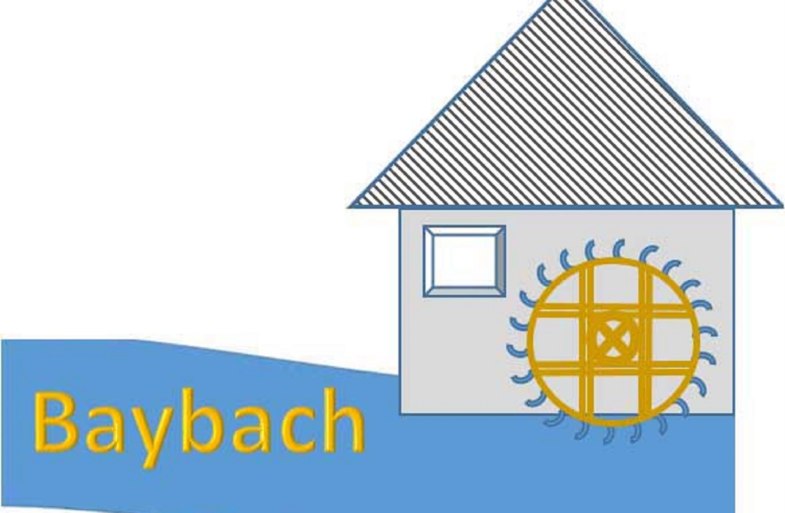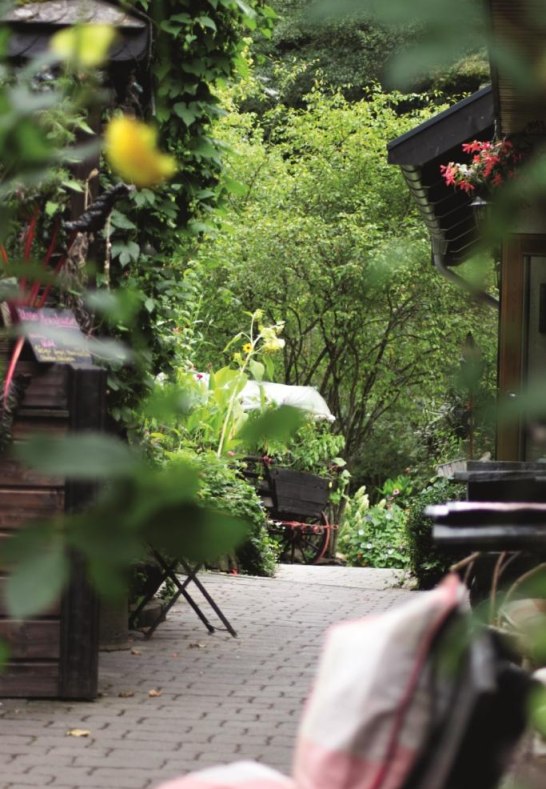00:00 - 23:59
20. Von Mühle zu Mühle im Baybachtal Schmausemühle
56283 Gondershausen
The valley becomes more spacious, we pass a horse paddock, where a four-legged friend shows his jumping skills exuberantly. Neatly maintained fish ponds come into view, and then we see our "stage goal" before us, the Schmausemühle. Here we want to take our well-deserved lunch break. And since we have seen the fish ponds earlier, we let ourselves serve freshly fished and prepared trout, which taste excellent to us. The Schmausemühle can be called a kind of center of the valley. Not only are we now about halfway through our hike, but here is also a junction from one side of the valley to the other. Both from the south from Sevenich - Heyweiler and from the north from Gondershausen - Beulich, roads lead into the valley and meet at the Schmausemühle. The road from Gondershausen even received an asphalt surface in 2000. The owners, who are now in the 8th generation to live in the mill, have made their house a popular and much visited excursion and vacation destination, where vacation guests can find peace and relaxation. The history of the mill can be traced back to about 350 years, i.e. to the time of the 30-year war. It changed its name several times and was called Scheid-, Pies-, Pinger- and finally Schmausemühle after its owners. The operation of their grinding mill went well, and they had customers far beyond the local area. Several horses were kept at the mill, with which they collected the grain from the farmers and brought back the flour. The life in the mill was hard, besides the milling business they also maintained a farm. There were always long journeys to the fields on the Gondershausen Heights. Even the brook itself sometimes gave the millers a hard time. Rudi Liesenfeld, who has retired to his retirement home, remembers a bad flood in January 1918, when the Bay River swelled and flooded the entire mill property. The cattle in the barn were already in the water and could only be brought to safety with great difficulty. We are also told a story of Schinderhannes at the Schmause Mill. At the end of the 18th century, when the French revolutionary troops entered the Rhineland, he is said to have brought the last Countess of Manderscheid in the Eifel to safety from the French by adventurous means. Their escape route to the inner German lands led them through the remote Baybach Valley, and one autumn evening they knocked on the shutters of the Schmausemühle and asked for night quarters. The miller was very startled by the visit at such a late hour, but granted the fugitives shelter and quenched their hunger and thirst. Since the countess was very exhausted, they took a few days' rest in the hospitable mill, and it was then that the miller's men learned the true identity of their guests. On leaving, the countess thanked the miller with a bag of gold pieces, and the Schinderhannes issued him a safe-conduct, which guaranteed him safety from the band of robbers. Freshly fortified, we leave the Schmausemühle and start the second part of our hike in good spirits. After only a few minutes, we pass a romantic narrow rocky area with rugged stone walls towering high on both sides of the stream. On the left hand side it is the Hohe Rabenley, which rises about 70 meters steeply and thus surpasses the already described rocky slopes by quite a bit. Several more of such angular rocky outcrops can be found in the valley, including the Hexen-lay, where a dark chapter of history took place in 1590. It was the time of the terrible witch hunts, and in the nearby village of Dorweiler the beautiful maiden Brigitte had been identified as a witch. She was accused of having had fun with the devil at night. She is said to have bewitched five young men and two priests. According to the protocol, she turned into a wolf and bit 13 children to death. Many cows are said to have been bewitched by her so that they no longer gave milk. And so it came to the trial against the "witch", in which the verdict was already determined. Brigitte was torturously burned on the Hexenley. In former times, several roofing slate mines were operated in the Baybach Valley. Below the Schmausemühle, we can still see spoil heaps and tunnel entrances that were driven several hundred meters into the mountain. Up to 40 workers were still employed there in 1921. In the outcrops you can still see the mighty slates that were folded up from the earth's interior millions of years ago by tremendous forces.






